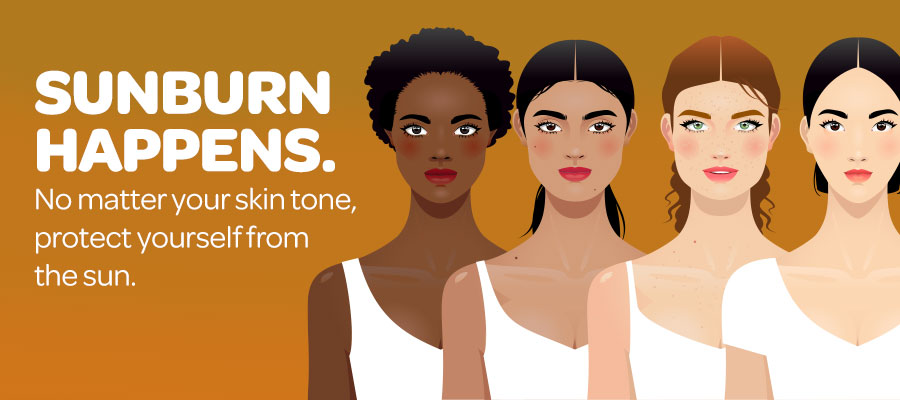
Ways to Help Prevent Skin Cancer
Practice Sun Safety
- Seek shade between 10 a.m. and 2 p.m. If your shadow appears shorter than you, seek shade. Every time you go outside, your skin is exposed to damaging ultraviolet (UV) rays. Not only can this cause premature skin aging (hello, wrinkles!), it also increases your risk of getting skin cancer, including melanoma.
- Wearing protective clothing such as a lightweight long-sleeved shirt, pants, a wide-brimmed hat and sunglasses, when possible.
- Use extra caution near water, snow and sand because they reflect and intensify the damaging rays of the sun, which can increase your chances of sunburn.
- Apply a broad-spectrum, water-resistant sunscreen with a Sun Protection Factor (SPF) of 30 or higher to all exposed skin, even on cloudy days. Reapply approximately every two hours or after swimming or sweating.
Avoid Indoor Tanning (tanning bed, booth, sunbed, or sunlamp)
- Avoid tanning beds. Ultraviolet light from tanning beds can cause skin cancer and premature wrinkling. When you use an indoor tanning options, your skin is exposed to damaging ultraviolet (UV) rays. If you want to look tan, consider using a self-tanning product, but continue to use sunscreen with it.
Monitor Your Moles
- Notify your dermatologist of any unusual moles. Unlike most cancers, skin cancer is easy to spot. Keep track of the spots on your skin and make note of any changes from year-to-year. If you notice a mole that is different from others, or that changes, itches, or bleeds, you should make an appointment to see a board-certified dermatologist.
Tags
cancer

